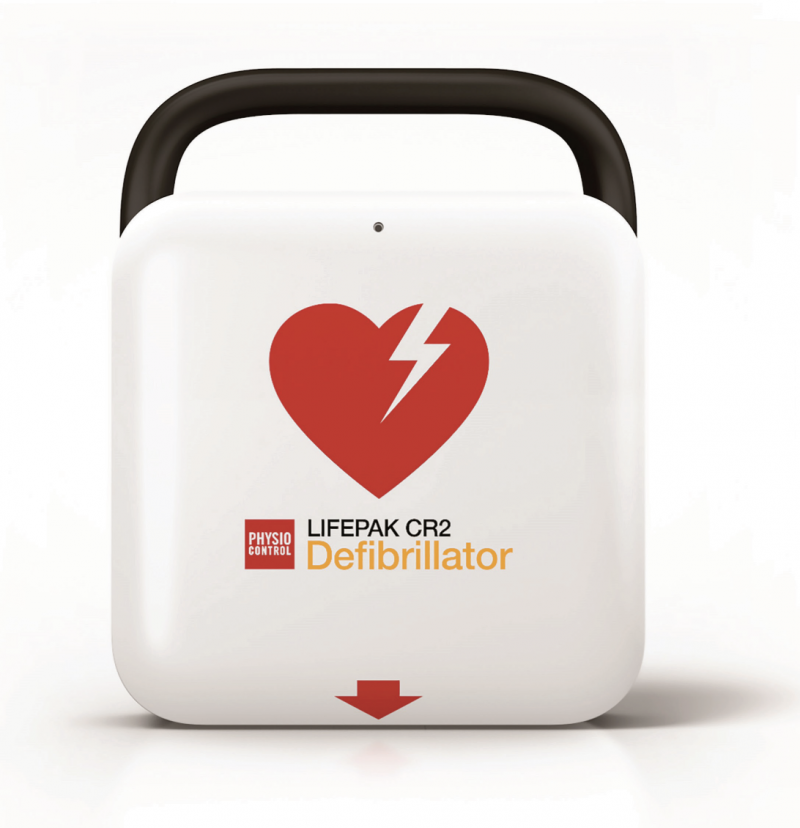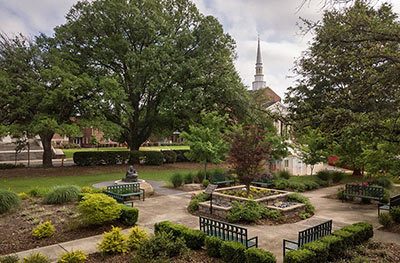MC’s Campus-Wide AED Deployment Makes Life-Saving Devices Available for Potential Cardiac Events

Mary Ellen Stewart has firsthand experience using an automated external defibrillator to help save a person’s life.
As a nurse in the cardiac unit of a hospital, she routinely deployed a defibrillator to help treat a patient’s heart dysrhythmia.
She also knows what can happen if the device isn’t available.
“Unfortunately, I have come upon accident scenes where, if I had access to an AED, it could have made a big impact on the outcome,” said Stewart, assistant professor in the School of Nursing at Mississippi College who also directs the Public Health Program.
According to the American Heart Association, AEDs help people who have a sudden cardiac arrest, which occurs when the heart suddenly stops beating regularly. This happens when the heart’s natural electrical system doesn’t work correctly.
If not treated within minutes, cardiac arrest quickly leads to death. It can happen to anyone, anywhere, at any time.
LIFEPAK CR2 defibrillators with the “LIFELINKcentral AED Program Manager” system will soon be placed throughout the Mississippi College campus to help deliver potentially life-saving treatment to those experiencing cardiac arrest.
“Just imagine sitting in your office and hearing someone say their chest is hurting. The next thing you know, they’re on the floor,” Stewart said. “If they are experiencing a cardiac emergency, the machine will tell you.”
Timing is everything during a cardiac episode. Stewart said the LIFEPAK AEDs help even a minimally trained person become a lifesaver.
“If they happen to come across someone in distress, if they see someone go down, they can immediately grab this defibrillator, put the monitor on the patient’s chest, and perform life-saving measures before 911 assistance can arrive,” she said. “The earlier we’re able to deploy some type of life-saving measures, the better.”
Stewart said AEDs have been available at specific MC sites, including the MC School of Law, the Baptist Healthplex, the Athletic Department, and Self Hall, for many years, but University leaders wanted to increase the machines’ availability throughout the Clinton campus.
“It was cost-prohibitive until we received a grant to start the public health program at MC,” she said. “We found the opportunity to include them as part of a course learning opportunity for the students.
“The public health students investigated where the AEDs needed to be deployed, and they have worked with all the stakeholders on campus – including Mark Warren from Public Safety, Roe Grubbs from Campus Operations, and Van Franklin and Van Jones from IT – to ensure the system is in working order.”
Large wall signs indicate where each of the 25 new defibrillators will be located. The machines are connected via Wi-Fi to alert caregivers to the emergency.
“The Wi-Fi capability gives us an extra layer of protection for the campus,” Stewart said. “If an AED is deployed, our team will get an email and text message that it is being used. The system also tracks if there is an issue with a defibrillator or if the batteries need changing.”
She said the LIFEPAK AED Response System includes step-by-step instructions and is easy to operate.
“It’s perfectly easy for a layperson to use,” she said. “If they come across someone who looks like they’re having a heart issue, they can grab the AED, open it up, and put the pads on the person’s chest. The device will indicate whether they need to be shocked.”
According to the Red Cross, having an AED in schools is a vital safety measure. Sudden cardiac arrest can happen anytime, and the presence of an AED, along with trained personnel, significantly increases the chances of survival.
It’s a responsible and potentially life-saving investment for the well-being of the school community. In fact, Stewart said, some off-campus organizations will deny institutions the ability to host their event if access to defibrillators is restricted.
That’s just one of many reasons to have AEDs available campus-wide:
* Sudden cardiac arrest can strike anyone, regardless of age, including faculty, staff, students, and visitors. Having an AED on-site increases the chances of saving a life when every second counts.
* When someone experiences SCA, their survival depends on immediate treatment with an AED. For every minute that passes without defibrillation, the chances of survival decrease significantly.
* AEDs are designed to be user-friendly, with clear instructions and voice prompts that guide even untrained individuals through the process. Teachers, staff, and students can effectively use them in an emergency situation.
* AEDs are often used in conjunction with cardiopulmonary resuscitation. Having both an AED and individuals trained in CPR can greatly improve the chances of saving a life.
* Universities like MC are often community centers, and having an AED available not only benefits the school population, but also the local community. During after-school events, sports activities, or meetings, AEDs can be a crucial asset.
* Schools have a responsibility to provide a safe environment for faculty, staff, and students. This includes being prepared for medical emergencies.
* Knowing there is an AED on the premises can provide peace of mind, reassuring faculty, staff, and students that the university is prepared for a medical emergency.
In short, according to Valerie Bailey, instructor in the School of Nursing at MC, AEDs save lives.
“You can go to any search engine and see how many times an AED device has saved somebody’s life in an emergency,” said Bailey, who also teaches public health. “That’s especially true on college campuses where we’re seeing younger people who are athletic having cardiac events. There are several high school students – even in Mississippi – who have had cardiac events, and defibrillators save lives in those situations.
“It can be a very scary ordeal – and hopefully we will never need to use the AEDs – but if we make them available and we educate people on how to use them, we will be blessed and thankful that we did.”
Stewart said training videos on the LIFEPAK AEDs will soon be available online and through social media.
“We hope to have a campus-wide push during the next several months to let anyone who wants to be trained in CPR get the compressions-only CPR training offered by the American Heart Association,” she said.
The key to using the AEDs at MC – and perhaps, to saving lives – is awareness.
“Be sure to locate where all the AEDs are – if you don’t know, that could be precious time wasted looking for one,” Stewart said. “Take advantage of the education we will be providing on AEDs. And don’t be scared of them. They are a blessing to have in a critical situation.
“Don’t limit your awareness to Mississippi College, either. If you’re out in the community and somebody has a cardiac event, call 911 and ask for an AED. You never know when you’ll be in a position to save a life.”
Sign-up For Our Newsletter
Get the latest news about Mississippi College delivered right to your inbox by subscribing to the Along College Street e-newsletter.


